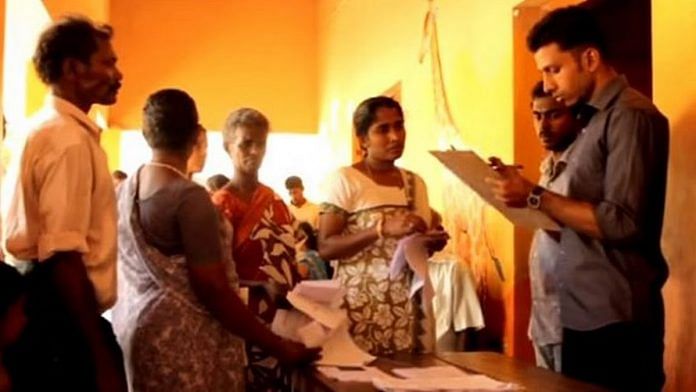Covid-19 and its variants did what even World War II and India’s wars with China and Pakistan could not: Disrupt a Census cycle that has continued unbroken since 1881. The Census scheduled for 2021 will now be completed only in 2024, three years behind schedule.
But first things first. What is a Census? Called a treasure trove of information, the Census encapsulates everything—from the country’s literacy levels, education, housing, household amenities, migration, urbanisation, fertility, mortality, language, religion and disability to other socio-cultural and demographic data such as age, gender and marital status. It is the largest repository of the nation’s people as well as the source of primary data at the village, town, and ward levels.
Post-Independence, Sardar Vallabh Bhai Patel, then Deputy Prime Minister and Home Minister, piloted the 1948 Census Act, a Union subject under Article 246 and listed in the seventh schedule of the Constitution. Indeed, the Act does not bind the Centre to conduct the Census on a particular date or release its data within a specified period. However, the Registrar General of India (RGI)’s office under the Ministry of Home Affairs has meticulously planned its different phases all these years. These steps include identifying, selecting and training enumerators, house listing and actual data collection, and processing and submitting detailed reports.
Also read:
India’s first digital Census
The RGI had rolled out its 2021 Census plans as early as 2019, with an estimated outlay of nearly Rs 9,000 crore and the mobilisation of over 3.3 million enumerators to collate data for the country’s first-ever digital Census. All the data for this Census will be fed centrally to the Census management and monitoring portal with a provision to support enumerators and supervisors in multiple languages. This time, the enumeration form will also record transgender people in a separate category. Till 2011, only the male and female genders were recognised.
The RGI’s office has now written to state governments to ensure that the changes in administrative boundaries (revenue villages, development blocks, sub-divisions and districts) should be completed by 30 June 2023. Clearly, the stage is now set for operations to start in October, as there is a three-month gap between the reorganisation of boundaries and the commencement of the Census. This will not only minimise operational difficulties in the field but also ensure that granular data thus generated will have longer validity.
Freezing administrative boundaries is the necessary first condition before the House Listing (HL) process—the first step in census operations—can begin.
Under HL, details of all buildings, permanent or temporary, are noted with their type, amenities, and assets. HL poses a challenge for India because the country does not have a robust address system. The next step is population enumeration, where more detailed information on each individual residing in the country, Indian national or otherwise, is recorded. Previously, such pre-Census activities took approximately one year to complete. But now that India is moving toward its first digital Census, the process will be fast-tracked.
For starters, enumerators will visit every house with tablets or smartphones and enter information into a dedicated portal directly. There will also be a provision for self-enumeration, where a person can “fill up, complete, and submit the census schedule” themselves.
However, the ongoing pre-Census activities will not impact the configuration of parliamentary constituencies in the forthcoming 2024 Lok Sabha elections.
Delimitation of Parliamentary and Assembly constituencies would continue to be based on the 2001 Census, till data from a Census after 2026 is published. Neither will there be a change in the number of seats for SC/ST candidates in government services. However, it will certainly lead to a correction in the Mahatma Gandhi National Rural Employment Guarantee Act 2005 (MGNREGA) beneficiaries and those entitled to food under the National Food Security Act 2013.
Also read: Bihar most aware state on caste census — 56% want information released
Caste and Census
The big ‘political question’ today is whether, in addition to information on language, religion, occupation, income and professional qualifications, information on caste will be included. This becomes important because several states, including Bihar, Maharashtra, Andhra Pradesh and Odisha, have passed resolutions in their Assemblies that the 2021 Census should include caste.
In fact, the government of Bihar has recently taken up the caste census as an independent exercise. It may be recalled that the BJP-led National Democratic Alliance (NDA) regime under Prime Minister Atal Bihari Vajpayee had refused to conduct a caste census in 2001. It must also be placed on record that in 2018, the Narendra Modi government had said it would carry out an OBC (Other Backward Classes) Census ahead of the 2019 Lok Sabha elections, but at the time of reckoning, it informed the Supreme court that caste enumeration is not feasible. The Central government affidavit stated: “A caste-wise enumeration in the Census has been given up as a matter of policy from 1951 onwards, and thus, castes other than SCs and STs have not been enumerated in any of the Census since 1951 till today”.
Be now, the Census process is on. Among other things, it will also mark the official confirmation of India being the most populous country in the world.
Sanjeev Chopra is a former IAS officer and Festival Director of Valley of Words. Till recently, he was the Director of the Lal Bahadur Shastri National Academy of Administration. He tweets @ChopraSanjeev. Views are personal.
(Edited by Zoya Bhatti)






